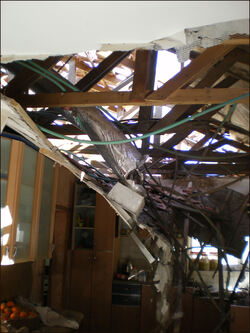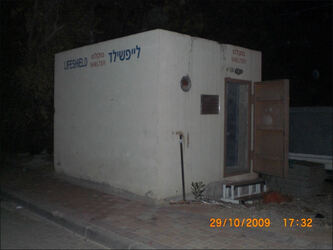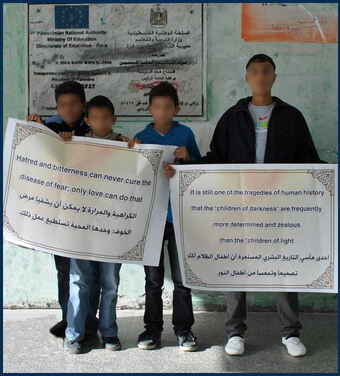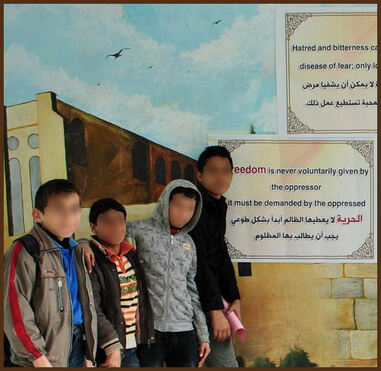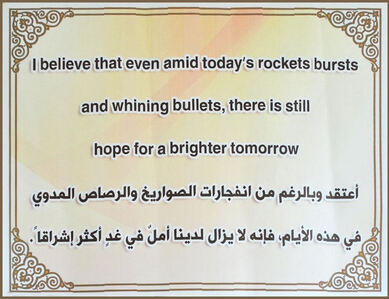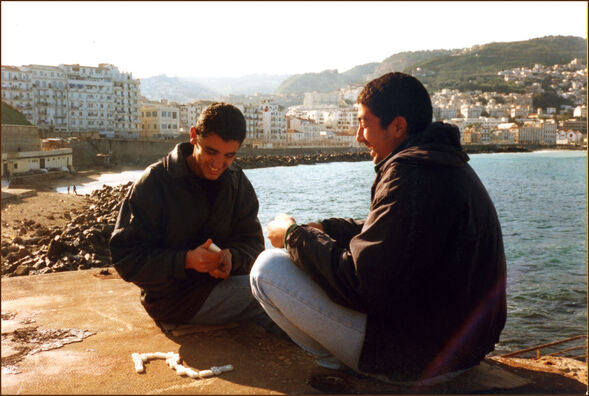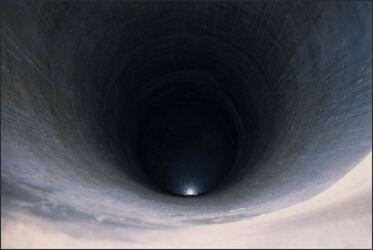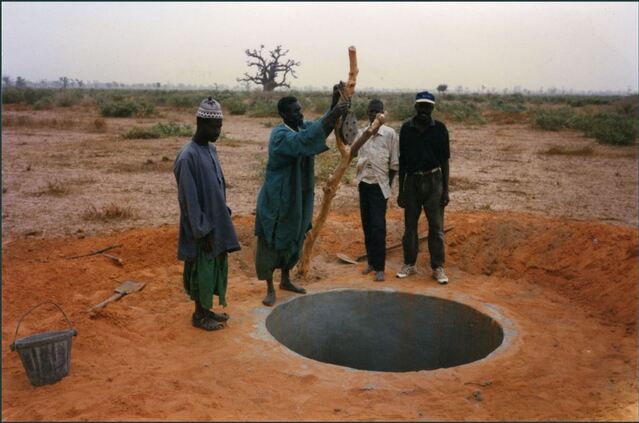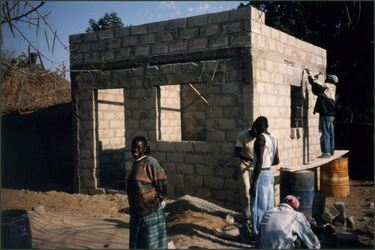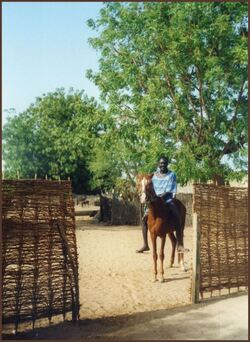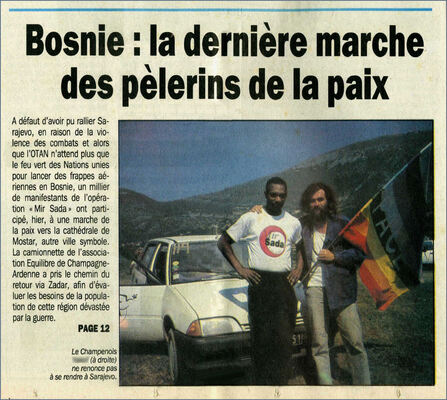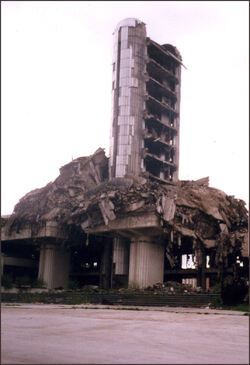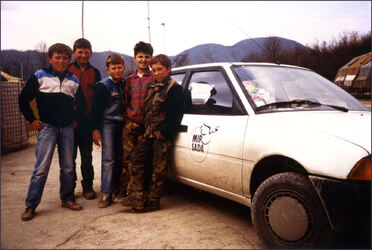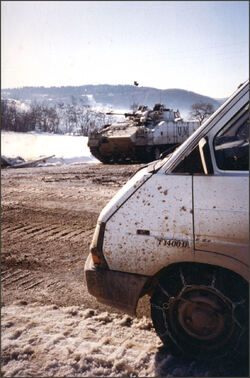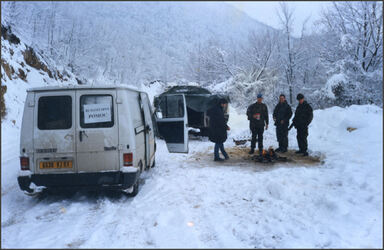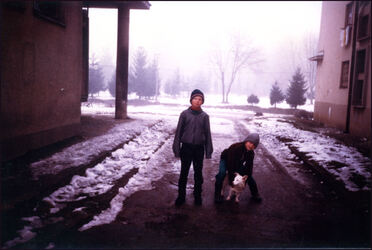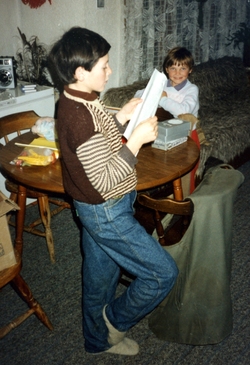-
STATUTES
Title I
I – Constitution, Object, Implications, Headquarters
Art. 1 Constitution, Organizational Name
Between the persons who were present in June 1994, an organization called Peace Lines (in French Messageries de la Paix) was created.
Art. 2 Definition, Identification and Objective
Peace Lines is a non-confessional and non-partisan movement of citizens without borders, open to all free beings of good will. Their objective is to convey and spread messages and texts for peace between human beings, cities, peoples.
Art. 3 First ImplicationThe above-mentioned peace refers to the free circulation of people, ideas, and items transferred for the purpose of harmony between human beings. In this spirit, the members of Peace Lines commit themselves to summon their means to act in the aim of restoring and reinforcing peace where it is threatened.
Art. 4 Second Implication
The members of Peace Lines, in their constant strife towards this peace, reject any policy of servitude, submission or assault against human dignity. In this way they pledge themselves to a continuous coherence of their words and deeds.
Art. 5 Third Implication
They gather and work freely, without any care of age, social status, or ethnicity. The main criteria for participating are availability and reliablility.
Art. 6 Composition
Peace Lines is composed of physical and moral persons, some of them referents, the others are members, likewise able to vote and be elected. To be considered an active member, in accordance with the spirit of the previous articles, you must truly, actively and regularly contribute to the pursuit of Peace Lines’ objectives. Referents are defined as people whose actions and/or works are known to us, and can be used, precisely, as constant, essential references.
Art. 7 Headquarters
The office of the Headquarters is located in Esternay (F-51). It can be transferred through a simple decision of the Steering Committee, confirmed by the Coordination Council. This decision will be submitted to votes at the earliest yearly meeting.
Title II
II – Organizational Process
Art. 1 The Coordination Council
1.1 Composition and Renewal
The Coordination Council is composed of a maximum of nine members. Among them are the members of the Steering Committee. Its members are elected for three years. There is a rotation of one third of the Coordination Council each year, at the Annual Meeting. Its members can be re-elected. Its debates can be held with or without physical presence, in person, or through exchange of mails, emails.
1.2 Role and meetings
The Coordination Council is the structure which enables the Steering Committee to develop its reflections and re-orient its actions, according to necessities and conjunctures. Its meetings are called by the Steering Committee, at least once every term (four times a year).
Art. 2 The Steering Committee
2.1 Composition and Renewal
The Steering Committee is composed of a maximum of four members :
- a coordinator
- a treasurer
- two secretaries
elected for a one year term by the Coordination Council in its midst.
2.2 Role and Meetings
The Steering Committee enables Peace Lines to pursue and reach its objectives, as they are defined in Articles 2, 3, 4 and 5 of Title I. Its members must be open to meeting at any time, according to the call of circumstances. The Steering Committee has a right to limit membership based on its discretion and the needs of the organization. In the case of a compromise to the moral and/or material interests of the organization, or in the case of a breach of the Internal Regulations, the Steering Committee is able to pronounce a change in membership status.
2.3 The Coordinator’s function
The Coordinator guides the work of the Steering Committee. In the case of a tied vote in either the Steering Committee or the Coordination Council, his/her vote is preponderant. The Coordinator is responsible for representing the organization in court, and in every other administrative or civil duty. However, he or she may delegate this role, in court and/or for such other circumstances, to another member of the Steering Committee.
Art. 3 Annual Meeting
3.1 Date
The Annual Meeting takes place on either the first or second Saturday of the year.
3.2 Composition
Members are called up at least fifteen days in advance of the meeting by the Steering Committee, which alone has the capacity to invite non-members. An absent member can only be represented by another member at the Annual Meeting.
3.3 Role
The purpose of the Annual Meeting is to hold necessary debates and votes. Decisions regarding objectives accomplished and the previous year’s financial balance statement are finalized through voting, as well as future goals and budget outline for the year to come. The assembly then proceeds to the election of the Coordination Council when a finished mandate makes that necessary.
3.4 Quorum
In order for debates to be valid, at least 60% of the membership base must be represented, either by the members themselves, or, in case of absence, by proxy. If this quorum is not reached, the Steering Committee must call a second Annual Meeting, at which the vote is valid, regardless of the number of members present.
Art. 4 the Extraordinary Meeting
The Extraordinary Meeting functions in the same way as the Annual Meeting, with regards to its composition and the validity of the debates. It is called upon by the Steering Committee, notably, for any change in statutes, or for the dissolution of the organization.
 votre commentaire
votre commentaire
-
Peace Lines - Israel-Palestine : anterior campaigns
the Ramallah, Nazareth, Jerusalem Call
(2000 Nobel Call)
Rocks against bullets, firebombs against tanks, and then bullets against rockets :
What more ? More bombs, and more bombings ? Three hundred persons murdered (30 of them Israelis) since September 29th, 2000, Year of the Millenium... More than 10,000 wounded (97% of them Palestinians), in the same time, in 2000, Year of the Jubilee...
Have we forgotten Albert Einstein's warning : "Peace cannot be kept by force, it can only be achieved by understanding" ?Lynchings, pogroms, chain killings : how can this be the Holy Land ?
Injustice, fanaticism, blind hate, and separatism - Jews and Arabs in a deadly lock,
ready for the massacres, in the name of what they are : "Jews" and "Arabs" ?
There must be an end to the blood-smeared logics of talion, and armed forces !
We call for a final stop to all territorial provocations and to a clockwork repression that precipitates us to the pit.In the face of the appalling waste of lives and opportunities to reach a real peace, do we have to reaffirm yet that it can only be built upon foundations of dignity, equity, and justice?
Both peoples have a right to live in peace and safety in their own respective States, according to the rules of international law. And complete equality of rights must be ensured to all the inhabitants of Israel-Palestine, without any discrimination !
There is no other human alternative : we have to move forward in mutual respect, reciprocity, and understanding !Physicians for Human Rights-Israel, Neve Shalom/Wahat al-Salam, the Israeli Council for Israeli-Palestinian Peace, Rabbis for Human rights, Sabeel, Mossawa, Democracy and Workers' Rights in Palestine
Signed by 31 Nobel Laureates :
Peace 4 : the Dalai Lama, 1989 (Tibet), Mairead Maguire, 1976 (Ireland), Joseph Rotblat, 1995 (Poland), Betty Williams, 1976 (Ireland)
Chemistry 11 : Elias Corey, 1990 (USA), Sir John Cornforth, 1975 (G-B), Paul Crutzen, 1995 (the Netherlands), Herbert Hauptman, 1985 (USA), Roald Hoffmann, 1981 (USA), Robert Huber, 1988 (Germany), Jerome Karle, 1985 (USA), Sir Harold Kroto, 1996 (G-B), Jean-Marie Lehn, 1987 (France), Max Perutz, 1962 (Austria), Jens Skou, 1997 (Denmark)
Medicine 12 : Werner Arber, 1978 (Switzerland), Günter Blobel, 1999 (Germany), Stanley Cohen, 1986 (USA), Jean Dausset, 1980 (France), Christian de Duve, 1974 (Belgium), Edmond Fischer, 1992 (USA), François Jacob, 1965 (France), Ed Lewis, 1995 (USA), Cesar Milstein, 1984 (Argentina), Richard Roberts, 1993 (G-B), Torsten Wiesel, 1981 (USA), Maurice Wilkins, 1962 (G-B)
Physics 2 : Klaus von Klitzing, 1985 (Germany), Simon van der Meer, 1984 (the Netherlands), Heinrich Rohrer, 1986 (Switzerland).
Literature : Wole Soyinka, 1986 (Nigeria)
This Call was published in Le Monde (online edition : November 24th, 2000) and Le Monde Diplomatique in décembre 2000, refered to in Haaretz (February 2001)
The Peace through Justice Call
(2001 Communiqué)
More than ten thousand wounded (96% of them Palestinians), in four months, close to four hundred killed (11% of them Israelis). Holy places desecrated. House demolitions and tree uprootings by decree. Lynchings, pogroms, shootings, bombs and bombings, the norm... Blind hate and separatism fueled by the blood-smeared logics of talion and armed force.
After decades of ongoing feuds and wars, the 2000-2001 bridging proposals can bring solutions to the painful matters of territories and refugees. In the spirit of U.N. resolutions 242 and 194. The colonies recognized as a source of inequity and hatred have to be peacefully evacuated. The majority of settlements will be attached to Israel, exchanged for equivalent surfaces. Why delay any more the birth of a free Palestinian State ?
Both Palestinians and Israelis share the same tiny piece of land. Both breathe the same air, drink from the same sources... address each other with the same peace salute : Shalom, Salam...
We, as members of the same human species, mere scientists, researchers, and peaceseeking leaders, urge all inhabitants of the 'Holy Land' to abide by the force of international right and permanently end this conflict from the past.Peace Lines, Peace Now, Palestinian Council for Justice and Peace, Physicians for Human Rights-Israel, the Center for Conflict Resolution and Reconciliation (Bethlehem-Palestine), Peace MidEast Dialog Group, MidEast Web for Coexistence; Democracy & Workers' Rights in Palestine, the Israeli Council for Israeli-Palestinian Peace, Israel/Palestine Center for Research and Information, Library on Wheels for Non-Violence and Peace.
Signed by 18 Nobel Laureates :
Peace Laureates 3 : Mairead Maguire, 1976 (Ireland), Desmond Tutu, 1984 (South-Africa), Betty Williams, 1976 (Ireland)
Literature Laureates 2 : Günter Grass, 1999 (Germany), Wole Soyinka, 1986 (Nigeria)
Chemistry Laureates 5 : Elias Corey, 1990 (USA), Jerome Karle, 1985 (USA), Sir Harold Kroto, 1996 (G-B), Ilya Prigogine, 1977 (Russia), Jens Skou, 1997 (Denmark)
Medicine Laureates 5 : Günter Blobel, 1999 (Germany), Arvid Carlsson, 2000 (Sweden), Christian de Duve, 1974 (Belgium), Richard Roberts, 1993 (G-B), Maurice Wilkins, 1962 (G-B)
Physics Laureates 3 : Leon Lederman, 1988 (USA), Jack Steinberger, 1988 (Germany), Simon van der Meer, 1984 (the Netherlands)
Members of the European Parliament : Ole Andreasen (Denmark), Marie-Anne Isler-Béguin (France), Piia-Noora Kauppi (Finland), Giuseppe di Lello (Italy), Struan Stevenson (G-B), Margie Sudre (France), Ulrich Stockmann (Germany).
NOBEL CALL
AGAINST TERROR, FOR COMMON SENSE(2005-2007)
BECAUSE WE ARE ALL HUMAN BEINGS,
BECAUSE WE ARE HORRIFIED BY THIS ENDLESS WASTE OF HUMAN LIFE IN THE NAME OF NATION OR RELIGION - THE DEATHCOUNTS GROWING FROM 400 IN 2001 TO MORE THAN 4000 NOW,
BECAUSE WE REFUSE THE LOGICS OF BLOOD PACTS AND ANY TERROR,
WE WHOLE-HEARTEDLY PRAISE THE COURAGE OF THE ISRAELI AND PALESTINIAN LEADERS AND PEOPLE WHO ARE TAKING BOLD STEPS ON THE WAY TO JUSTICE AND COMMON SENSE.
'ALONG THE WAY OF LIFE SOMEONE MUST HAVE SENSE ENOUGH AND MORALITY ENOUGH TO CUT OFF THE CHAIN OF HATE.' (Martin Luther King)
BE SURE THE WORLD IS WATCHING, WITH DEEP EXPECTATIONS.
WE ARE AT YOUR SIDE.
WHATEVER OBSTACLES MAY COME NOW, EVERYTHING YOU ACHIEVE FOR THE SAKE OF PEACE, JUSTICE, AND NON-VIOLENCE, WILL BENEFIT THE WHOLE HUMAN SPECIES.
MORE THAN EVER, WE DRINK FROM THE SAME SOURCES, WE BREATHE THE SAME AIR, WE SHARE THE SAME EARTH.
Signed by 69 Nobel Laureates :Peace Nobels 11 : Carlos Belo (East Timor, 1996), the Dalai Lama (Tibet, 1989), Pdt F.W. de Klerk (South-Africa, 1993), Shirin Ebadi (Iran, 2003), Mairead Maguire (Ireland, 1976), Adolfo Perez Esquivel (Argentina, 1980), Joseph Rotblat (Poland, 1995), Desmond Tutu (South-Africa, 1984), Cora Weiss (I.P.B., 1910), Betty Williams (Ireland, 1976), Jody Williams (USA, 1997)
Medicine Nobels 16 : Baruj Benacerraf (USA, 1980), Günter Blobel (Germany, 1999), Stanley Cohen (USA, 1986), Christian de Duve (Belgium, 1974), Jean Dausset (France, 1980), Edmond Fischer (USA, 1992), Roger Guillemin (France, 1977), Louis Ignarro (USA, 1998), François Jacob (France, 1965), Eric Kandel (USA, 2000),Arthur Kornberg (USA, 1959), Edwin Krebs (USA, 1992), Ferid Murad (USA, 1998), Richard Roberts (GB, 1993), Donnall Thomas (USA, 1990), Torsten Wiesel (USA, 1981)
Chemistry Nobels 22 : Peter Agre (USA, 2003), Paul Berg (USA, 1980), Thomas Cech (USA, 1989), Elias Corey (USA, 1990), Robert Curl (USA, 1996), Johann Deisenhofer (Germany, 1988), Manfred Eigen (Germany, 1967), Richard Ernst (Switzerland, 1991), John Fenn (USA, 2002), Herbert Hauptman (USA, 1985), Alan Heeger (USA, 2000), Dudley Herschbach (USA, 1986), Avram Hershko (Israel, 2004), Roald Hoffmann (USA, 1981), Sir Aaron Klug (GB, 1982), Sir Harold Kroto (GB, 1996), Jean-Marie Lehn (France, 1987), William Lipscomb (USA, 1976), Mario Molina (Mexico, 1995), Douglas Osheroff (USA, 1996), Jens Skou (Denmark, 1997), John Walker (GB, 1997)
Physics Nobels 14 : Zhores Alferov (Russia, 2000), Georges Charpak (France, 1992), Jerome Friedman (USA, 1990), Pierre-Gilles de Gennes (France, 1991), Vitaly Ginzburg (Russia, 2003), Donald Glaser (USA, 1960), Sheldon Lee Glashow (US, 1979), Gerardus 't Hooft (the Netherlands, 1999), Klaus von Klitzing (Germany, 1985), Leon Lederman (USA, 1988), Tony Leggett (USA, 2003), Heinrich Rohrer (Switzerland, 1986), Jack Steinberger (Switzerland, 1988), Franck Wilczek (USA, 2004)
Economics Nobels 3 : Daniel Kahneman (Israel, 2002), Robert Mundell (USA, 1999), George Akerlof (USA, 2001)
Literature Nobels : Wole Soyinka (Nigeria, 1986), Günter Grass (Germany, 1999)
97 Members of European Parliament :
France : Kader Arif, Marie-Hélène Aubert, Roselyne Bachelot, Jean-Luc Bennahmias, Jean-Marie Beaupuy, Bernadette Bourzai, Marie-Arlette Carlotti, Françoise Castex, Jean-Marie Cavada, Paul Marie Couteaux, Adeline Hazan, Marie Anne Isler Beguin, Anne Laperrouze, Bernard Lehideux, Marie-Noëlle Lienemann, Alain Lipietz, Gal Philippe Morillon, Michel Rocard (ex-PM), Martine Roure, Tokia Saïfi, Margie Sudre, Ari Vatanen, Yannick Vaugrenard, Christine de Veyrac
GB : John Bowis, Sharon Bowles, Bairbre de Brun, Chris Davies, Sajjad Karim, Caroline Lucas, Sarah Ludford, Elizabeth Lynne, Bill Newton Dunn, Phillip Whitehead, Diana Wallis, Terence Wynn
Belgium : Ivo Belet, Frieda Brepoels, Jean-Luc Dehaene (ex-PM), Véronique de Keyser, Gérard Deprez, Raymond Langendries, Dirk Sterckx, Marc Tarabella, Anne Van Lancker,Germany : Alexander Alvaro, André Brie, Jo Leinen, Cem Ozdemir, Bernd Posselt, Heide Rühle, Gabriele Zimmer
Spain : Maria Badia i Cutchet, David Hammerstein Mintz, Bernat Joan i Mari , Elena Valenciano Martinez-Orozco
Lithuania : Vytautas Landsbergis, Rolandas Pavilionis, Justas Paleckis, Aloyzas Sakalas
Ireland : Avril Doyle, Liam Aylward, Proinsias de Rossa, Jim Higgins
The Netherlands : Edith Mastenbroek, Margrietus van den Berg, Elly de Groen-Kouwenhoven
Portugal : Ana Gomes, Maria da Assunçao Esteves, Miguel Portas
Latvia : Rihards Piks, Georgs Andrejevs, Tatjana Zdanoka
Sweden : Anders Wijkman, Anna Hedh, Hélène Goudin
Estonia : Marianne Mikko, Siiri Oviir, Tunne Kelam
Czech Republic : Jana Hybaskova, Jaroslav Zverina
Slovenia : Romana Jordan Cizelj, Mihael Brejc
Cyprus : Ioannis Kasoulides, Adamos Adamou
Hungary : Edit Herczog, Csaba Sandor Tabajdi
Italy : Luisa Morgantini, Umberto Guidoni
Finland : Satu Hassi, Piia-Noora Kauppi
Luxembourg : Erna Hennicot-Schoepges
Poland : Grazyna Staniszewska
Denmark : Margrete Auken
Austria : Karin Resetarits
Malta : Louis Grech
Personalities:
Sulaiman Al Hamri (Palestinian Coordinator of Combatants for Peace), Zohar Shapira (Israeli Coordinator of Combatants for Peace), Isabelle Adjani, Hugues Aufray, Maud Fontenoy (Rowing across the Atlantic, and Pacific Oceans), John Mayall, Edgar Mitchell (USA, Astronaut, Moonwalker, Apollo 14), Russell Schweickart (USA, Astronaut, Apollo 9), Jean-François Clervoy (European Astronaut), Umberto Guidoni (European Astronaut), David Huyse (World Team Skydivers 2004-2006), Jean-Bernard Bonnet (world record in skydiving alt. 11,000 m, 1989), Loïc Leferme (world record in No-Limits apnoea at – 171 m), Adam Rice (Chief Operating Officer, Breaking the Ice).
With the Best Wishes of : Lance Armstrong, Pdt Bill Clinton
Communiqué calling for the release of Dr Al Shaer
(2007)
Co-signed by seven Medicine Nobels (Günter Blobel, Arvid Carlsson, Christian de Duve, Richard Roberts, Roger Guillemin, Edmond Fischer, Craig Mello); seven Chemistry Nobels (Sir Harold Kroto, Yuan T. Lee, Elias Corey, Dudley Herschbach, Douglas Osheroff, John Polanyi, Jens Skou); three Peace Nobels (Desmond Tutu, Betty Williams, Shirin Ebadi); one Physics Nobel (Frank Wilczek); one Literature Nobel (Wole Soyinka)
and fifteen Members of the European Parliament (Alain Lipietz, Kader Arif, Françoise Castex – France; Anders Wijkman, Eva-Britt Svensson – Sweden; Luisa Morgantini, Umberto Guidoni – Italy; Sajjad Karim, Caroline Lucas – Great-Britain; Frieda Brepoels – Belgium; Kyriacos Triantaphyllides – Cyprus; Piia-Noora Kauppi – Finland; Margrete Auken – Denmark; Justas Paleckis – Lithuania; Jamila Madeira – Portugal )."After the sweep of some thirty elected members of the Palestinian government and legislature in the West Bank by Israeli troops – among them the Minister of Education, Dr Nasreddin Al Shaer – as a « response » to the constant firing of kassams from Gaza, we ask for the immediate release of those detained. Such moves can only make things worse, and fuel the atrociously vain, deadly spiral of aggression and retaliation.
We also call for an immediate and permanent end to all kassam firing, and to all extra-judicial killings, as they so obviously feed each other with innocent lives of by-standers slain, maimed, and traumatized by countless hundreds.
'Mankind and human dignity, the personality of the individual, have to be taken as the starting point of any dialogue.' (President Pöttering of the European Parliament, at the Euro-Mediterranean assembly in Tunis, in March 2007)."
[If you wish to know more about Dr Al Shaer you can find his last interview by typing "Robert Novak & Al Shaer" in Google.]
On both sides of the border : Sderot (Israel) and Gaza (Palestine)
A small Israeli town next to the border of Gaza
Sderot is a small Israeli town of 24,000 inhabitants (roughly one half immigrants from Morocco, the other half from the former Soviet Union), situated less than a mile from the border of the Gaza Strip. It was founded in 1951 on land which belonged to the Palestinian villagers of Najd who were expelled to the Gaza Strip in May 1948.
Sderot is a town that has been abandoned by 1 in 5 of its inhabitants, due to their fear of rockets fired from the Beit Hanoun area, across the border. It is reported (by Dr Adriana Katz, of the Sderot Medical Center) that more than three quarters of the people in Sderot suffer of Post Traumatic Stress Disorder. This is either ignored or deemed insignificant by most observers, compared to the intensive damage inflicted to Gaza in retaliation for these rockets, and for many people Sderot has become something of a ghost town that doesn't really exist anymore. Nobody wants to go to Sderot.
This is precisely when we get involved, as humanitarian volunteers concerned with the understanding and the alleviation of human suffering. Unconcerned with prejudices, unbiased, willing to hear everything the people had to say, one of us in December 2007 finally decided she had to see for herself, and took the bus from Jerusalem to Ashkelon, and then Sderot. She visited as much of the city as she could, from the City Hall to the Candle Factory to the market to private homes. In one street, a local TV team was busy as one more rocket had just hit a house (pictures above). An instant before, the mother and one of her daughters had been in the kitchen, and ended up in the emergency room.
Daily life in Sderot : Since the first rocket was fired upon the city, on August 25, 2005, barely three days after Israel had concluded its evacuation of the Gaza Strip, you find shelters scattered everywhere (pictured above). Even bus stations have been transformed into concrete shelters, as well as the new train station, inaugurated on December 24, 2013, which has been armored, conceived to be "rocket-proof". Every time the sirens wail for a "Red Code" alarm, people have 7 to 15 seconds to rush to the shelters. When we are told, in Gaza or elsewhere, that these rockets are unguided and ineffective, do they really not know about the thirteen people who were killed by rockets, and the dozens who have been wounded through the years, to speak only of this one small town, Sderot ? What if a rocket hits a kindergarten, or the market place, as happened in Sarajevo (the Markale massacres) in February 1994 and August 1995 ?
April 2011, one evening, we were walking in Sderot, when an eerily familiar sight struck me, carved into the asphalt, taking me back to the days in Bosnia when granata were raining from the sky, and such ominous shapes were everywhere to be found on the streets. The students who were there just shrugged : to them, this was so common that they had become numbed to it somehow. How can we live under such stress and pretend this is "normal" ? The instant a 120 mm mortar shell, or a 115 mm Qassam rocket of 40 kilos, with a warhead of 10 kilos, impacts a place packed with people, both sides are doomed : beyond the appalling condition of the victims and witnesses, not just those who fired it, but the whole human group around them, as could be seen in Bosnia, again, in the final confrontation between Serbs and Bosniaks. In Sderot, the backyard of the police station is filled with dozens of such exploded rockets, dated and stacked on shelves (see above). It is reported that 1,628 Qassam rockets and mortar shells were fired upon Sderot in 8 months (up to 6 a day average), from June 2007 through February 2008.
Rockets are blind, rockets are counter-productive. From the first drop of blood to the last, only people, on both sides, pay the price for these speculations and strategies of tit for tat. Our conviction is that there has to be an end to this. To quote from the mayor of Sderot in May 2011, David Buskila : "Believe me that I feel bad for my children, for the children who live in Sderot, but I also feel pain for the children who live on the other side of the border, in Gaza... We can create another quality of life, it is so close !"
"Since war begins in the minds of men, it is in the minds of men that defences of peace must be constructed." stated the UNESCO Constitution in 1945. To construct defences of peace, and "create another quality of life", still one thing is missing though, in educational systems : to feed the minds of the children, teenagers, young adults, with the needed nutrients and tools to build up strength, conquer fear, and develop a higher sense of creative solidarity and humanity.
**** **** **** **** **** **** **** **** ****
On the other side of the border
"Gentlemen, stop firing rockets!" pleaded President Peres by the end of 2008, after a growing rain of unguided rockets from the Gaza Strip. To back the plea, Operation Cast Lead was launched, which razed whole areas, and left 1,400 killed in its wake (their names on the Wall, 3rd picture). Mahmoud Mattar had left his home to get some bread from the nearest bakery. A missile exploded before him. His face was badly burned, and he will never see again.
As can be seen in the 1st picture taken in April 2011, a number of buildings and houses in Gaza could not be rebuilt, for lack of funding, cement and iron rebar.
In terms of proportions, the ratio of casualties in 2008-2009 was of 1 Israeli to 100 Palestinians. Compared to 200,000 victims in nearby Syria, as of the end of 2014 according to some sources, these figures in and around Gaza have gradually faded away, as if horror were in numbers only. As if 1 counted for 0, and 1,000 for close to 0.
Strange as these pictures may seem from the outside, this is what we have been working on in Gaza - and these quotations from our "little red book", The spirit of Luther King, were posted on the walls of a boys' high school a few kilometers from the border.
The best part, actually, is that this work was done months after I had left Gaza, as our friends there had taken the matter into their own hands, come what may. Admittedly, it has been a bit surreal to start our bilingual programme with Nobel Peace Laureate Martin Luther King, Jr, given the level of separatism and violence the antagonizing communities have reached through the years. Still, we had to start somewhere, and in the words of Dr King, "somebody must have sense enough and morality enough to cut off the chain of hate and the chain of evil in the universe."
How exactly you do that in the long term is another story, that remains to be told at this stage, as we are still waiting for another permit to enter Gaza, as of tonight, February 9th, 2014. If a brand new train has been connecting Tel Aviv to Sderot for a few weeks now, there is no train to reach Gaza, from anywhere, nor are there any buses to get you there, or airplanes for that matter. Once you have been granted the providential permit, you need a taxi to drive you to the one and only public access from Israel, provided that you also have permission from the Gaza authorities to get in.
1,8 million people live in this enclave of only 360 square kilometers (slightly more than twice the size of Washington, D.C.), with 64.4% of the population under the age of 24, and only 2.6% over the age of 65. The median age is 18, and 40% of the young under 24 are unemployed. Likewise, 40% of the people live under the poverty line. The GDP per capita is estimated around $3,000 (2.200 €). Meaning the average Gazan has to live with about 180 € a month.
Illiteracy among the young is low though (1%). You count 640 schools in Gaza (383 State schools, 221 UNRWA schools, and 36 private ones) for a total of some 440,000 students; 5 universities and 8 new schools under construction (source UNRWA).
Daily life in Gaza (in between military operations) : Since the beginning of the Gaza siege, which can be set at the end June 2006, when Sergeant Shalit was captured, the Gaza Strip has been exposed to six military operations. Their code-names : Summer Rains (summer of 2006 until the end of November), Autumn Clouds (October-November 2006), Hot Winter (February 2008), Cast Lead (December 2008-January 2009), Pillar of Cloud (November 2012), and the ongoing Mighty Cliff (also known as Solid Rock, or Protective Edge), in July-August 2014.
The total toll of the first five operations is estimated at more than 2,000 for the Palestinians (with a peak of 1,400 in between 2008 and 2009) and 26 for the Israelis.
By the end of August, it reached 2,192 for the Palestinians (1,523 of them civilians, 519 of them children - 70% of them under the age of 12), 72 for the Israelis (66 of them soldiers and officers). Source : U.N. OCHA. 469 Israeli soldiers and officers and 87 civilians were wounded. Around 11,000 Palestinians were reported wounded by the Ministry of Health in Gaza. In our experience, from hospitals to classrooms, the wounded represent the hardest core of suffering among the children and teenagers, the people at large.
Not to mention post-traumatic disorder, for which little care is provided, and which affects each and everyone, to various degrees. Not much of a "regular daily life" to really speak of, in between the Summer Rains, Autumn Clouds, Hot Winters, and other assorted forms of military climatology.
For the first five operations altogether, close to 7,000 persons were wounded in Gaza (almost 6,900), 587 on the Israeli side.
A fact that too many people ignore : the population in Gaza is composed of 800,000 children under the age of 14, and 400,000 young ones from 15 to 24. Two thirds of the population.
Our conviction is that the battle for justice, freedom, and dignity (i.e. “peace”) has to be waged right there : among these two thirds of the population, through texts that will empower them, and provide them with the means to break the psychological and intellectual blockades to which they are exposed.
 1 commentaire
1 commentaire
-
Towards the end of the Dark Years, the Black Decade...
In Bosnia, we could testify about the way a Nobel campaign would work, and change mentalities on the ground. People, at every level, simple soldiers, field commanders, politicians, media editors, through the thick fog and din of war, were impressed by these voices which managed to reach them, and relate to the repressed parts of their former selves. The names mattered a lot to them. It came as a mental shock, switching from the madness of routine horror back to sanity and common sense - a sense of hope again. Something to remind them of the future, of the aftermath.
In Algeria, one of the most striking messages we received from the Nobel community came from the American writer Saul Bellow. He ended his pledge of support with this memorable line : "It is sure to intimidate those nasty bastards."
Nasty bastards refering to the terrorists, the Islamist fundamentalists who had devastated the country for years.
Saul Bellow made us all think. His logic was quite rational actually. It goes like this :
You should not presume that fanatics are made of one block, one essence. You should not form a monolithic vision of them. As if they could only be defeated by superior firepower. They have their own fault-lines. Hidden inside. Before pledging themselves to jihad and terror, they also were, for a number of them, students, teachers, mechanics, carpenters, what have you. Part of them still needs to relate to the world they left, that we represent.
If and when this world stands up, and speaks out, against their deeds, it does send them a shock-wave. Particularly on the moral ground, since they claim to rule morality. When people who are notorious worldwide are brave enough to speak their truth, it does destabilize them inside. Not only them, but more specifically, the people around them, the fringe they need to survive, for logistics, communications, outside support, et cet.
Terrorism cannot survive without this fringe, composed of people who still work and live in the world that jihadis have vowed to destroy.
This fringe, buffer-zone, is where the ideology of terror can and will be defeated.
NOBEL CALL FOR ALGERIA
We are human beings.
Horrified by the slaughters in the name of fundamentalism, we express our ultimate and universal reprobation concerning all acts of bloody savagery committed by the armed groups which terrorize Algeria. No political or religious speech, whatsoever, can ever legitimate the massacre of innocents, the murder of a child, the rape of a woman.
Mere scientists, researchers, and leaders devoted to the good of mankind, without any exclusion in terms of belonging and creeds, we want the whole people of Algeria to know about our deep emotion, and utter solidarity, facing the trials they live through. Aware of their daily courage, witnesses to the struggle of a people standing, surviving, and resisting noiselessly, we humbly affirm our heartfelt presence by their side.
Tell us what we can do for you, and how we can do it.
We are the members of the same human species. Let the will to live prevail, free and fearless !Supported by :
9 Peace Nobels : Norman Borlaug (USA, 1970), le Dalai Lama (Tibet, 1989), Pdt Gorbachev (Russia, 1990), Mairead Maguire (Ireland, 1976), Adolfo Pérez Esquivel (Argentina, 1980), José Ramos-Horta (East-Timor, 1996), Desmond Tutu (South Africa, 1984), Elie Wiesel (USA, 1986), Betty Williams (Ireland, 1976)
3 Literature Nobels : Saul Bellow (USA, 1976), Claude Simon (France, 1985), Wole Soyinka (Nigeria, 1986)
24 Chemistry Nobels : Paul Boyer (USA, 1997), Herbert Brown (USA, 1979), Elias Corey (USA, 1990), Sir John W. Cornforth (UK, 1975), Paul Crutzen (Netherlands, 1995), Robert Curl (USA, 1996), Manfred Eigen (Germany, 1967), Richard Ernst (Switzerland, 1991), Ernst Otto Fischer (Germany, 1973), Herbert Hauptman (USA, 1985), Dudley Herschbach (USA, 1986), Roald Hoffmann (Poland, 1981), Robert Huber (Germany, 1988), Jerome Karle (USA, 1985), Sir Aaron Klug (Lithuania, 1982), Sir Harold Kroto (UK, 1996), Jean-Marie Lehn (France, 1987), William Lipscomb (USA, 1976), Rudolph Marcus (Canada, 1992), Max Perutz (Austria, 1962), John Polanyi (Canada, 1986), Ilya Prigogine (Russia, 1977), Jens Skou (Denmark, 1997), Henry Taube (Canada, 1983)
19 Medicine Nobels : Julius Axelrod (USA, 1970), Baruj Benacerraf (Venezuela, 1980), Stanley Cohen (USA, 1986), Jean Dausset (France, 1980), Christian de Duve (Belgium, 1974), Renato Dulbecco (Italy, 1975), Edmond Fischer (USA, 1992), Roger Guillemin (France, 1977), François Jacob (France, 1965), Arthur Kornberg (USA, 1959), Edwin Krebs (USA, 1992), Ed Lewis (USA, 1995), Cesar Milstein (Argentina, 1984), Daniel Nathans (USA, 1978), George Palade (Romania, 1974), Richard Roberts (UK, 1993), Philip Sharp (USA, 1993), Maurice Wilkins (UK, 1962), Rolf Zinkernagel (Switzerland, 1996)
10 Physics Nobels : Georg Bednorz (Germany, 1987), Nicolaas Bloembergen (Netherlands, 1981), Arthur Schawlow (USA, 1981), Steven Chu (USA, 1997), Claude Cohen-Tannoudji (France, 1997), Jerome Friedman (USA, 1990), Klaus von Klitzing (Germany, 1985), Arno Penzias (Germany, 1978), Heinrich Rohrer (Switzerland, 1986), Simon van der Meer (Netherlands, 1984)
3 Economics Nobels : Gérard Debreu (France, 1983), Franco Modigliani (Italy, 1985), Herbert Simon (USA, 1978)
This Call was widely published in the Algerian media, and broadcast on the Algerian radio network.
Le Matin (April 13, 1998, cover page) : "58 Prix Nobel se prononcent contre l'intégrisme"
El Khabar (April 14, 1998): "Messagers de paix et Nobel"
El Watan (April 14, 1998) "58 Prix Nobel dénoncent le terrorisme en Algérie"
La Tribune (April 14, 1998) "des Nobel condamnent les carnages commis en Algérie"
El Moudjahid (April 15, 1998, cover page) "le combat de l'Algérie est exemplaire"
Liberté (April 15, 1998) "le geste des Messageries de la Paix"
Le Soir d'Algérie (April 15, 1998) "mettre fin à la désinformation"
Horizons (April 15, 1998) "58 Prix Nobel condamnent les actes de sauvagerie commis en Algérie"
El Moudjahid (April 16, 1998) "l'objectif est de lutter contre la désinformation sur l'Algérie"
Le Matin (April 16, 1998) "d'autres Nobel vont signer"
La Nouvelle République (April 16, 1998) "on se démarque de la désinformation"(to be continued)
 1 commentaire
1 commentaire
-
In the heart of darkness, a mile or so from the coast and its hotels for European tourists, all the furniture they had was this : a wooden box for a seat, and all the cooking had to be done on a tiny makeshift stove, filled with charcoal, when there was charcoal to be burnt... Such was the living room, under the stars... It could have been Mauritania, or Senegal (there are no coasts in Mali). It happened to be Senegal.
The beginning of inspiration and happiness was on the road to M'Bour, on the coast, where our friends could finally buy the first sacks of cement and the rods of iron rebar that were needed to construct our first well in the desert. Perched on that treasure of cement and iron, we were the lords of creation then...
In that borderless desert of ochre sand, khamkham (the occasional thorny brambles) and the once in a while baobab tree, dawned on us the power of this reminder : "the beauty of the desert is that it hides a well somewhere..." All we had to do was to dig that well.
Around this first well some parched land was acquired, and the people immediately named it "the Field of Friendship and Brotherhood". The people worked this barren earth, Africans and European volunteers side by side. Seeds from France were offered, and brought by plane, planted. Fruit-trees from Africa also were later put into the ground - banana trees, mango trees, goyave trees, lemon trees...
Because of winter rains, the traditional hut made of earth and thatch had cracked open. The next step was to build a "real house", made of cement blocks that were made on the spot, and left to dry in the sun until they found their final places in the walls. A couple of horses (and a brand new cart) were bought; and to replace the tiny candles, solar lamps were brought from Europe, on their funny, outlandish tripods. The village's wise man was there in person to greet the new light and give his blessings.
 1 commentaire
1 commentaire
-
* See translation of this article by Isabelle Horlans (photo credit), in the French daily L'Union (August 8, 1993) below : "Bosnie : the last march of the peace pilgrims"
In the beginning, in the spring of 1993, there was an article by a French war reporter, Jean-Paul Mari, who informed his readers that in besieged Sarajevo, Bosnia, there was a man, Zlatko Dizdarevic, with a team of journalists, living and working underground, in the caves of their Oslobodenje headquarters, as the tower with its offices had been reduced to rubble by enemy artillery.
There also was a convoy of people from many nations (France, Poland, Italy, Greece, Spain, Belgium, the Netherlands, Sweden, the United States...), in the summer of 1993, gathered under the motto "MIR SADA" ("PEACE NOW"), who had pledged itself to break the siege of Sarajevo. Two thousand of these "peace pilgrims" made it to Split, on the Dalmatian Coast, with trucks, buses and cars. Half of those reached the first front lines, on the shore of Lake Prozor in Middle Bosnia, in 120 cars and buses. Of these thousand, only sixty drove all the way, through front lines and check-points, to Sarajevo, in one Italian bus and less than 10 cars. The result was a de facto cease-fire, and for some time it looked like something was happening in Sarajevo, at last, after 15 months of siege.
We did not even have maps of the former-Yugoslavia... We did not have a truck or a van... There was no Peace Lines then. Needless to say, we were penniless, and knew there would be no gas stations in war zones... We only knew that we had to go back, that Bosnia was staring at us, and that we just could not turn a deaf ear to it. We started from scratch, had to go begging around until we found a benevolent used cars salesman, in his little wooden cabin, who first entrusted us with one of his Renault Trafic vans. Then, we had to fill the van with boxes of food, drugs, candles, clothes, blankets, lots of books too, since we had heard Sarajevo's mayor, Muhamed Kreševljaković, warn us that, despite the hardships of the siege, they were sick and tired of being treated like "mere digestive systems". The other dire warning he gave us concerned the fact that only 5% of humanitarian help ever reached his citizens. The rest was swindled away by militias and the usual war profiteers. Part of our relief, at the end of our 20 some convoys, was that we never lost one box or one kilo of anything to these budala (traffickers in Bosnian), thugs.
From the Dalmatian Coast to Sarajevo, you had around 60 check-points, and just one track through the mountains to connect the capital of Bosnia to the rest of the world : the Diamond Road. It had been named thus by the British of the United Nations Protection Force who controlled this part of Bosnia.
On the other side of the mountain, you had the burning city of Gornji-Vakuf, and yet another mountain to climb, until you reached the Lashva Valley, with more towns under fire, starting with Novi-Travnik and Vitez. Maybe Vitez was the strangest of all, since in the heart of it you found Stari-Vitez, a Muslim section, besieged by the rest of Vitez (Croats), themselves under attack from the Muslim Armija from Zenica, with their dreaded auxiliaries, the mudjahideen, Muslim volunteers who had come by the hundreds from as far as... Afghanistan (it is said that Bin Laden was there and got himself a Bosnian passport at the time, and that Bosnia was Al Qaida's training field in Europe - cf. Unholy terror, by John R. Schindler, Zenith Press, 2007, pp. 123-124).
To us, this was never about new borders, new flags, and ancient grudges. Instead, it was all about the fate of people, and kids foremost, who got caught under the compelling spell of granata, mortar shells, and snipers' bullets, that were the prevailing type of weather we had in those days. The boy on the third picture is the last victim of the war between Croats and Bosniaks in Middle Bosnia. He was only 10, playing with his two friends and the dog before their home, in Vitez. The granata that killed him, in February 1994, was fired from Stari-Vitez, a few hundred yards away. On the second picture, you see the impact of such a granata. What difference does it make, now, that he was a Croat, or a Bosniak, or a Serb ?
We had to think twice, we had to think hard. What was it we could really do, to be on the side of the U.N. Protection Force, with those who really tried to stop this madness of butchering human beings in the name of new nations, of die-hard nationalism. Too often in the name of personal profit, whether you call it obvious looting or war-profiteering ? One van held no more than a ton and a half of whatever. It was no rocket science to find out that, even with a dozen trucks like our better-equipped Alsatian friends from the n.g.o. Presence (picture on the left above) conveying 100 tons each time, it was like a few drops of relief in an ocean of pain.
100,000 kilos of food, say, for 100,000 people in the Southern city of Mostar - if you ever could distribute equally to each and all - would only amount to 1 kilo per person and per trip. We had to search upstream for the sources of the conflict. As we came to understand the culture of the pre-warring factions, among the younger generations, was more or less the same, one thing we did was to record hundreds of cassette tapes with all the anti-war songs we could think of. This was always a great success at check-points. Instead of cartons of cigarettes or bottles of hard liquor, we'd pay them with songs. One of the most mind-blowing scenes happened on the Vrbanja Bridge in Sarajevo, in 1995, when the Bosnian soldiers started dancing to one of our most popular songs. We were surrounded by loaded guns, and people half-willing to use them, depending upon the hour of day and their state of intoxication, but the victory of the guitar over the gun was still quite dubious.
As songs come and go, we came up with the idea that texts were needed, something more solid, to remind each and every fighter of what it was all about, pre-war, when they were farmers, teachers, employees, students... We did write to a few people for authorizations, and met with Martin Gray, the Warsaw Ghetto survivor, in the home where he had survived the lethal flames of a wild bush fire in the South of France (cf. his best-seller For Those I loved). Martin gave us such a warm welcome, and it was clear that much of our inspiration came from his own struggle as a teenager in Warsaw, how he crossed the lines, and went through barriers and obstacles.
It was then we got down to serious business : duplicating, translating into Serbo-Croat the most relevant extracts from him, Henry David Thoreau, Voltaire, La Boétie, Giono, Khalil Gibran, Richard Bach, Saint-Exupéry, Walt Whitman, Plato, Gandhi, Martin Luther King, Thich Nhat Hanh, Brassens, Ferré... We brought those booklets through the check-points, distributed them widely, everywhere we went. What a scene it was to hear a ten-year old reading these words of Jean Giono out loud to his younger sister and family ! "Kada neko nema dovoljno hrabosti..." : "When one does not have the courage to be a peace maker, one is a warrior..." (picture in the middle).
* Translation of the article "Bosnia : the last march of the peace pilgrims" : "Unable to reach Sarajevo at this stage, because of the violence of the fighting, at a time when NATO is only expecting a green light from the UN to launch air strikes in Bosnia, one thousand protesters of the "Mir Sada" convoy participated yesterday in a peace march towards the Mostar Cathedral, another symbolic town. The van of the Equilibre group from Champagne-Ardenne (France) drove back home via Zadar, to assess the needs of the population in this war-stricken area."
**********************************************************************************************************************************************************************************************
OUR FIRST NOBEL CALL : 1995
the Zenica-Sarajevo Call to the fighters and leaders in former Yugoslavia
This Call, signed by 33 Nobel Laureates, European Deputees and Personnalities, was broadcast on most radios and tv stations in Bosnia, repeatedly, from April to the summer of 1995, on the three sides : Bosnians, Croats, and Serbs (NTV Zetel in Zenica, Studio 99 in Sarajevo, Kis-TV in Kiseljak, the two radios of Mostar, TV-Pale).
ENOUGH ! Enough blood ! Enough speeches ! Enough alibis !
The balance of this war, who can draw it up ?
Who can tell others about the loss of a brother, of a son, of a wife ?
War always took frightfully more than it gave.
Strategic, territorial games have led to terror,
To amputations, to the toothless grimaces of the after-war times.
After war, we know there is no promised land.
After war, those only who have lost all pay the price
of nightmares, of general carelessness, of back to normal loneliness.
After war, there are no heroes left, no just causes.
There are only cripples left, and disfigured faces,
Among the ruins, and the earth graves into lines.
Because we want the stench of war no more,
Because we all know there is no military solution,
We call for a powerful movement of peace and reconciliation
For a final cease-fire on all the territory of former Yugoslavia
We must finally have the courage and sanity to say it is ENOUGH
We must prevent any more massacres !
Not one more bullet, not one more shell, nevermore !Martin Luther King's widow - Coretta Scott King (USA, 1964)
Mairead Maguire (Ireland, 1976)
Betty Williams (Ireland, 1976)
Mother Teresa (Albania, 1979)
Adolfo Perez Esquivel (Argentina, 1980)
Reverend Desmond Tutu (South-Africa, 1984)
Elie Wiesel (Romania, 1986)
the 14th Dalai Lama (Tibet, 1989)
Pdt Mikhail Gorbachev (Russia, 1990)
Rigoberta Menchu (Guatemala, 1992)
Pdt F.W. de Klerk (South-Africa, 1993)
Pdt Yaser Arafat (Egypt, 1994)
PM Yitzhak Rabin (Israel, 1994)7 Nobel Chemistry Laureates
Max Perutz (Austria, 1962)
Vladimir Prelog (Bosnia, 1975)
Sir John W. Cornforth (Great-Britain, 1975)
Henry Taube (Canada, 1983)
Jean-Marie Lehn (France, 1987)
Robert Huber (Germany, 1988)
Elias Corey (USA, 1990)6 Nobel Medicine Laureates
François Jacob (France, 1965)
Jean Dausset (France, 1980)
Cesar Milstein (Argentina, 1984)
Stanley Cohen (USA, 1986)
Rita Levi-Montalcini (Italy, 1986)
Erwin Neher (Germany, 1991)7 Nobel Physics Laureates
Louis Néel (France, 1970)
Nicolaas Bloembergen (the Netherlands, 1981)
Simon van der Meer (Switzerland, 1984)
Heinrich Rohrer (Switzerland, 1986)
Georg Bednorz (Germany, 1987)
Alexander Müller (Switzerland, 1987)
Jack Steinberger (Germany, 1988)Non-Nobel Personalities : Joan Baez (USA), Tony Benn (G-B, MP), Dalil Boubakeur (Algeria-France), Martin Gray (Poland), Henri Laborit (France), Jules Roy (France)
Members of the European Parliament : Dominique Baudis (France), Philippe Herzog (France), Alexander Langer (Italy); Mireille Elmalan (France), Nana Mouskouri (Greece)
 votre commentaire
votre commentaire



